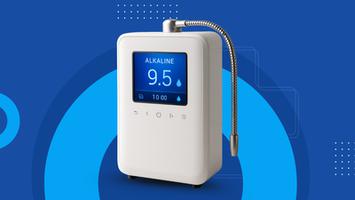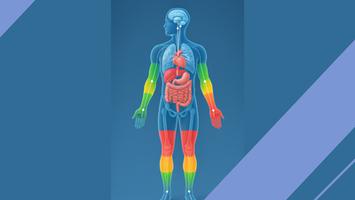Interpreting Your HRA Results: What the Colors Mean
- By
- Kenko India Health
- May-29-2025
Interpreting Your HRA Results: What the Colors Mean
One of the most distinctive features of the HRA Health Monitor is its intuitive 3D visualization system. This color-coded representation of your health status makes complex medical information accessible and understandable. Understanding what these colors mean is essential for interpreting your results and taking appropriate action.
The HRA Color Coding System
The HRA system uses a standardized color scheme to represent different health states across all body systems. This visual approach allows for quick identification of areas that may require attention.
-20—+20:Grey or colorless
Grey areas in your HRA report indicate optimal or near-optimal function. These systems or parameters are operating within healthy ranges and generally don't require intervention. Grey results suggest that current lifestyle practices for these areas should be maintained.
+20—+60:Yellow
Yellow indicates a mild deviation from optimal function. While not necessarily indicating disease, yellow areas suggest the system is under some stress or beginning to show early signs of imbalance. These areas may benefit from lifestyle modifications and preventive measures.
-20—-60: Light Blue
Light Blue represents a moderate deviation from normal function, indicating a higher level of concern. Systems marked in light blue may be showing significant stress or early dysfunction. These areas typically warrant closer attention and potentially more active intervention strategies.
+60—-100:Dark Blue
The deepest colors (Dark blue, depending on the specific parameter) represent severe deviations from normal function. These areas typically require prompt attention and follow-up with appropriate healthcare providers.
+60—+100:Red
Red areas indicate significant deviation from normal function, suggesting potential health issues that require attention. While not necessarily diagnostic of specific diseases, red markers highlight areas where further medical evaluation may be beneficial.
Interpreting 3D Organ Visualizations
The HRA system presents results in anatomically correct 3D models, allowing for intuitive understanding of which body areas may require attention:
Localized vs. Systemic Patterns
Pay attention to whether color changes are isolated to specific organs or systems, or if they appear across multiple systems. Localized changes may indicate issues specific to that organ, while widespread patterns might suggest systemic factors like inflammation or metabolic issues.
Symmetry and Asymmetry
Asymmetrical color patterns (different colors on left vs. right sides of paired organs) may provide additional insights. Natural asymmetry exists in some body functions, but unexpected asymmetry might warrant further investigation.
Depth and Surface Visualization
The 3D models allow visualization of both surface and deeper structures. This multi-layered approach provides a more comprehensive understanding of potential issues affecting different tissue layers.
Beyond Colors: Understanding Numerical Values
While the color system provides an intuitive overview, the HRA report also includes specific numerical values for each parameter:
Reference Ranges
Each parameter is measured against established reference ranges, allowing for objective assessment of deviations from normal function.
Trending Data
For repeat assessments, the system tracks changes over time, helping identify improving or worsening trends that might not be apparent from a single measurement.
Correlation Analysis
The HRA system analyzes relationships between different parameters, potentially identifying patterns that suggest specific health conditions or risk factors.
Taking Action Based on Results
Understanding your HRA results is just the first step. Here's how to effectively use this information:
- Discuss results with qualified healthcare providers who can provide context and recommendations
- Prioritize addressing red and orange areas while implementing preventive measures for yellow zones
- Consider lifestyle modifications appropriate to the specific systems showing deviations
- Schedule follow-up assessments to track changes over time
- Use results as a tool for early intervention rather than as a cause for anxiety
Remember that the HRA system is designed as a screening tool to identify potential areas of concern, not to diagnose specific conditions. Results should always be interpreted in the context of your overall health status and in consultation with appropriate healthcare professionals.
Health Articles
Supporting Eco-friendly life for all

Early Detection Success Stories: HRA Case Studies
Early Detection Success Stories: HRA Case StudiesThe true value of preventive health screening becomes evident through real-world examples. ...
Details
Interpreting Your HRA Results: What the Colors Mean
Interpreting Your HRA Results: What the Colors MeanOne of the most distinctive features of the HRA Health Monitor is its intuitive 3D visual...
Details
The Health Benefits of Alkaline Water
The Health Benefits of Alkaline WaterAlkaline water has gained significant attention in recent years for its potential health benefits. Prod...
Details
Understanding Bioelectrical Impedance in Health Monitoring
Understanding Bioelectrical Impedance in Health MonitoringBioelectrical impedance analysis (BIA) is a sophisticated method used by the HRA H...
Details